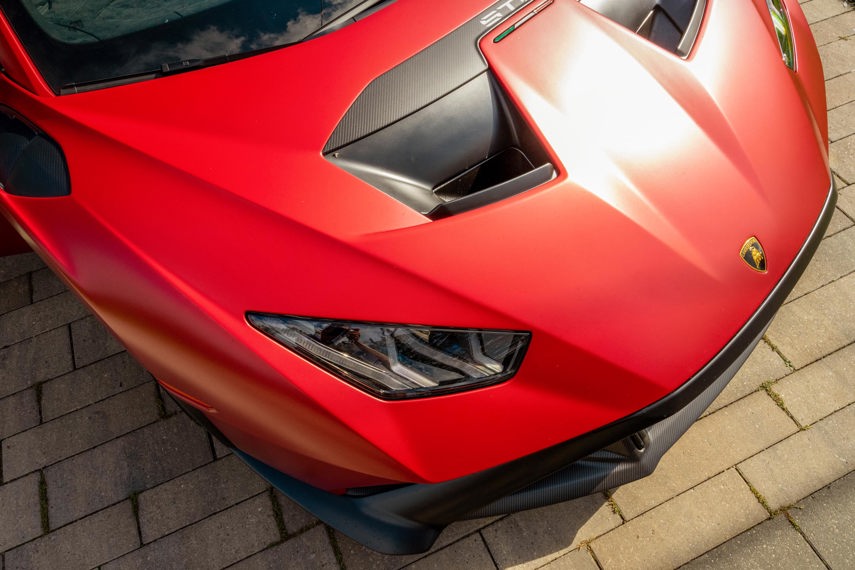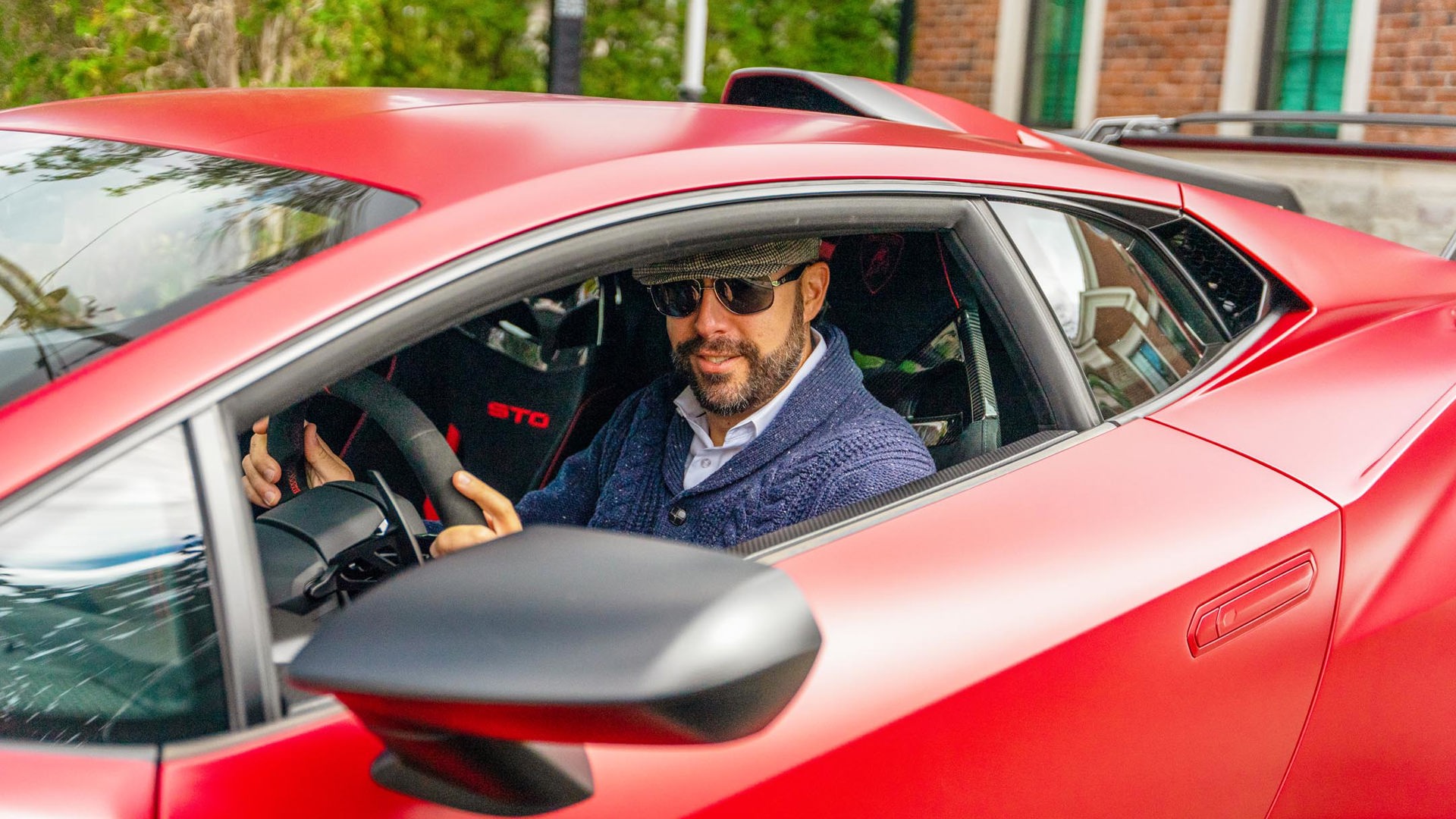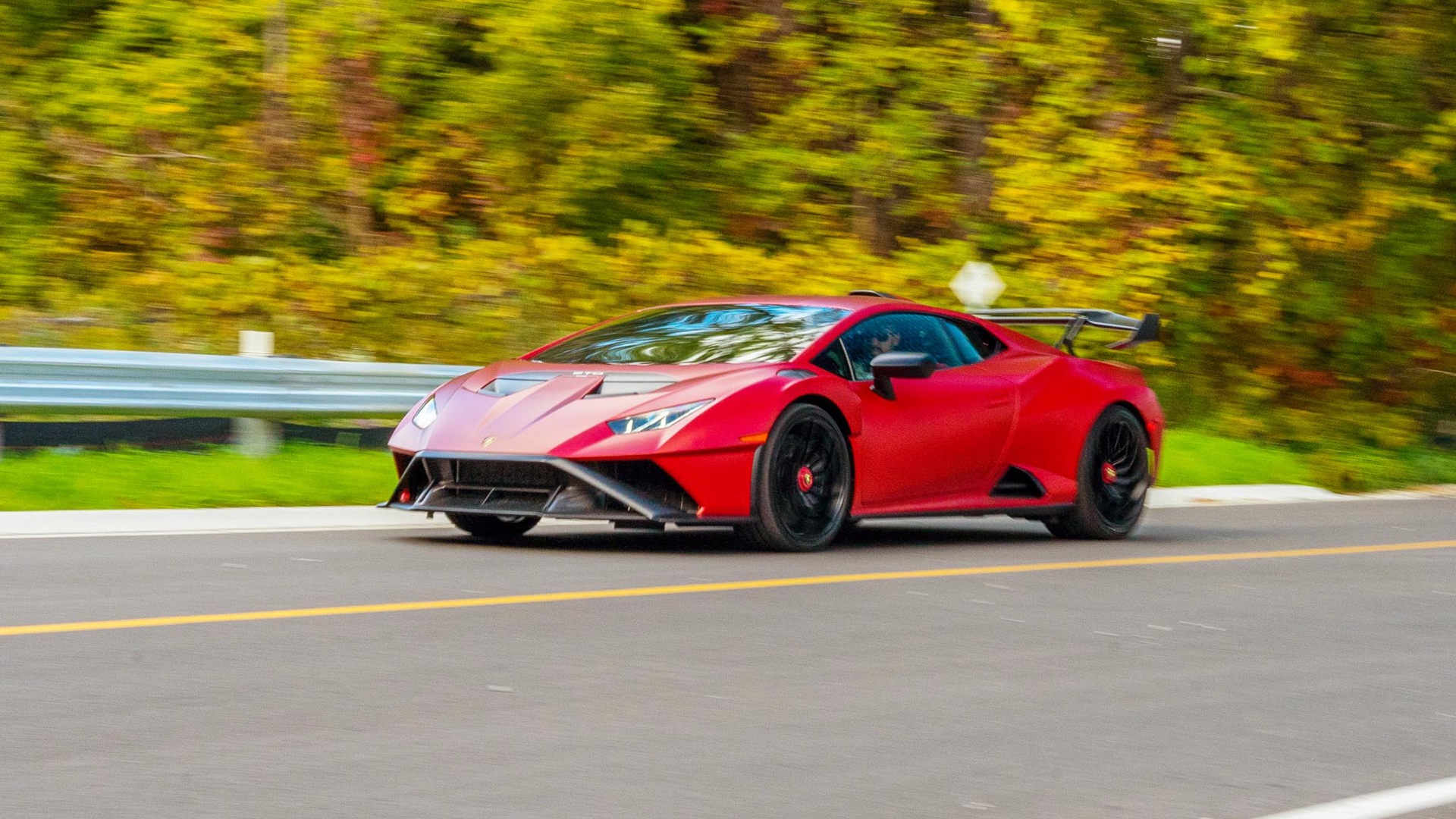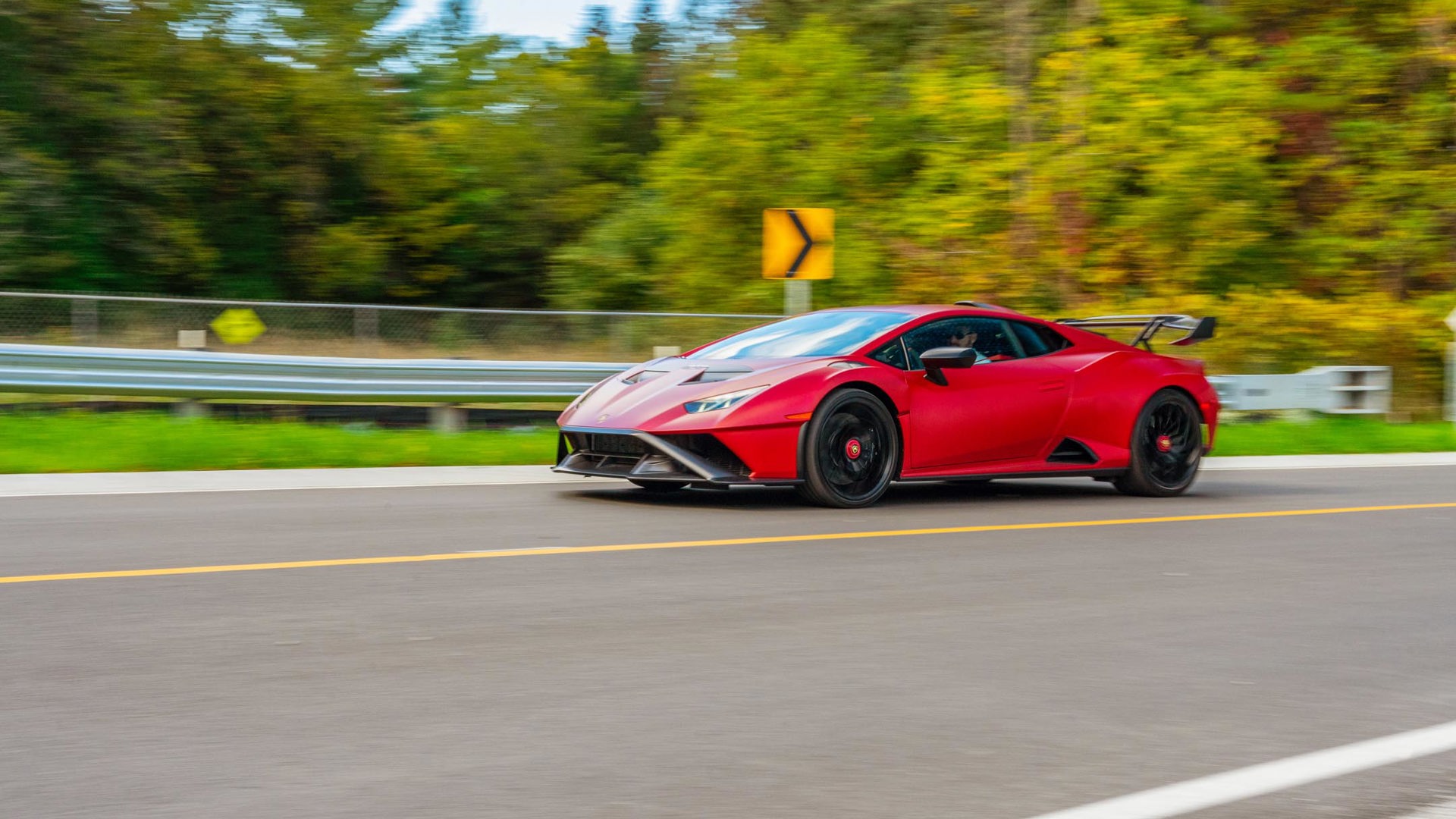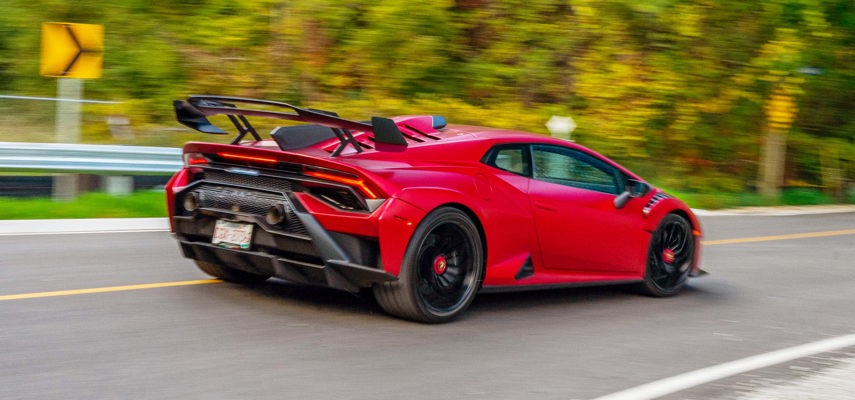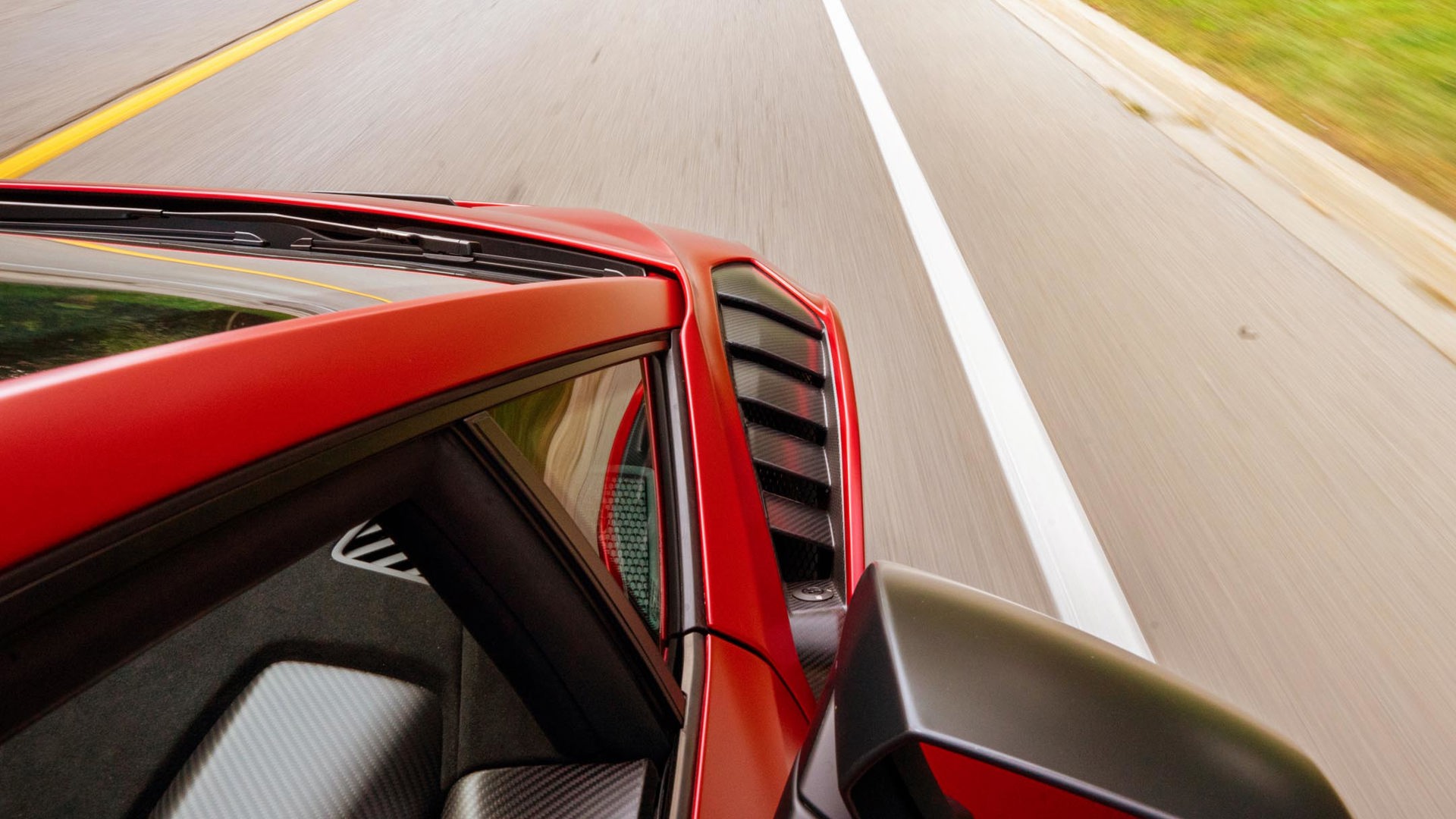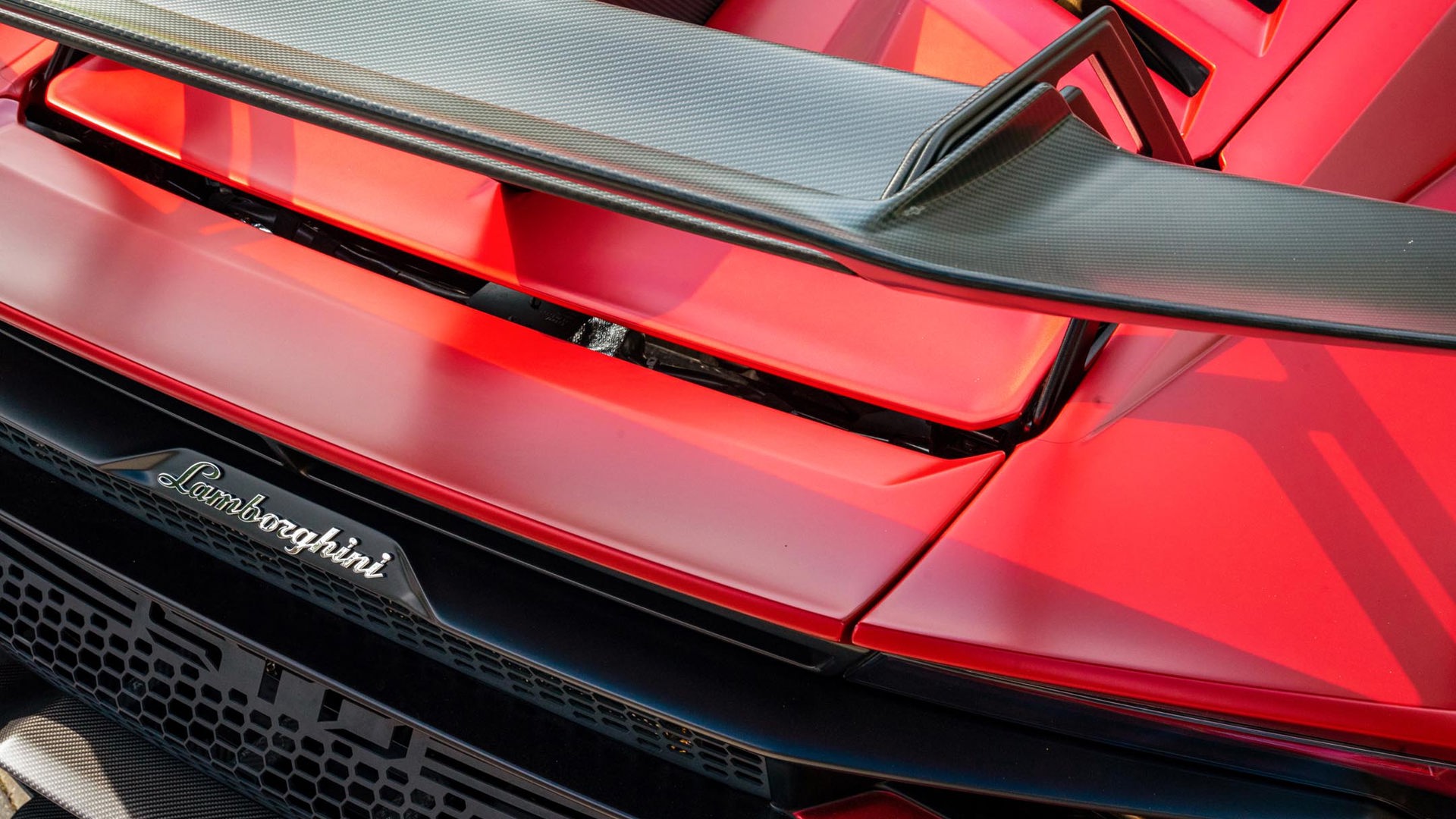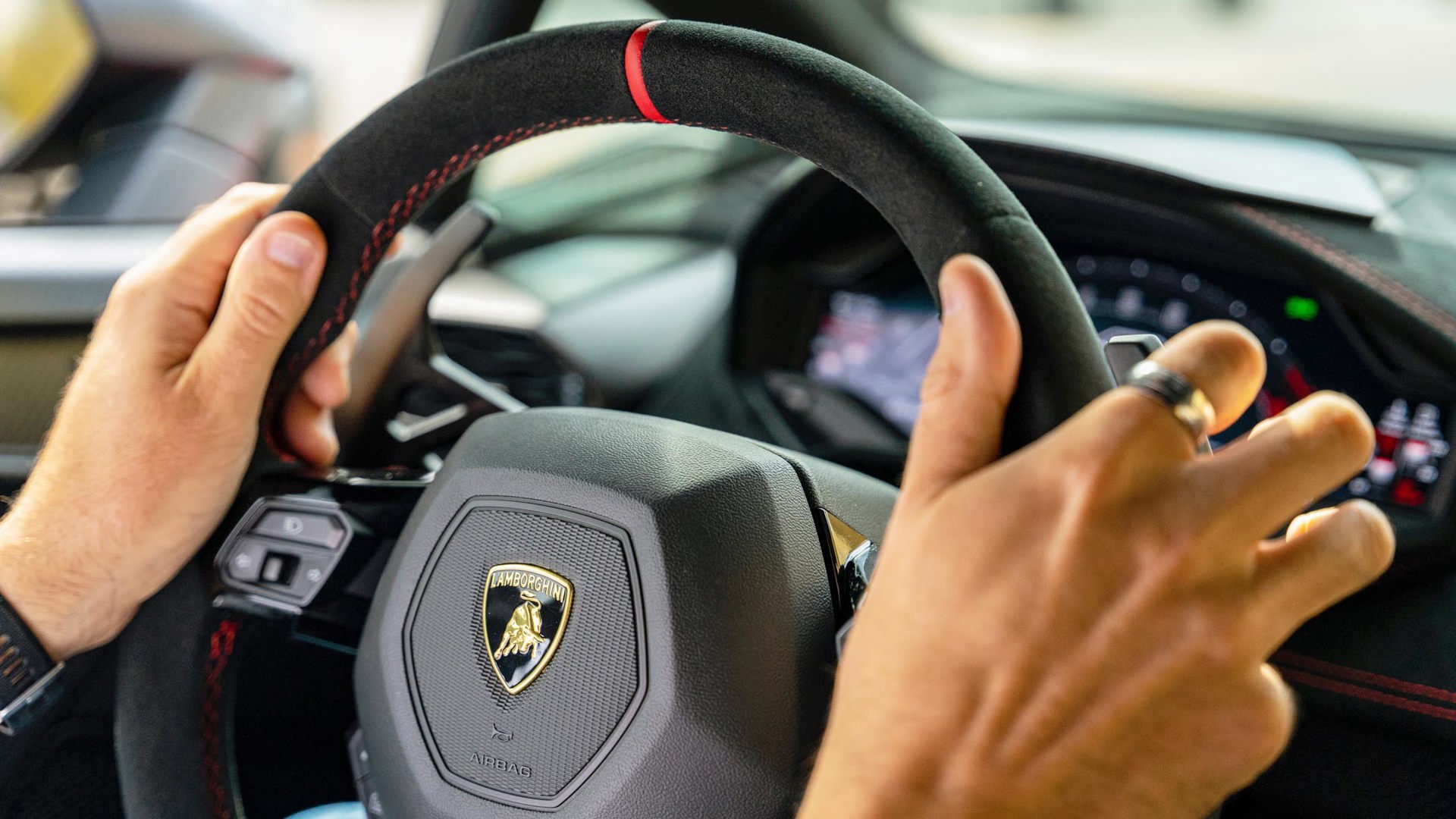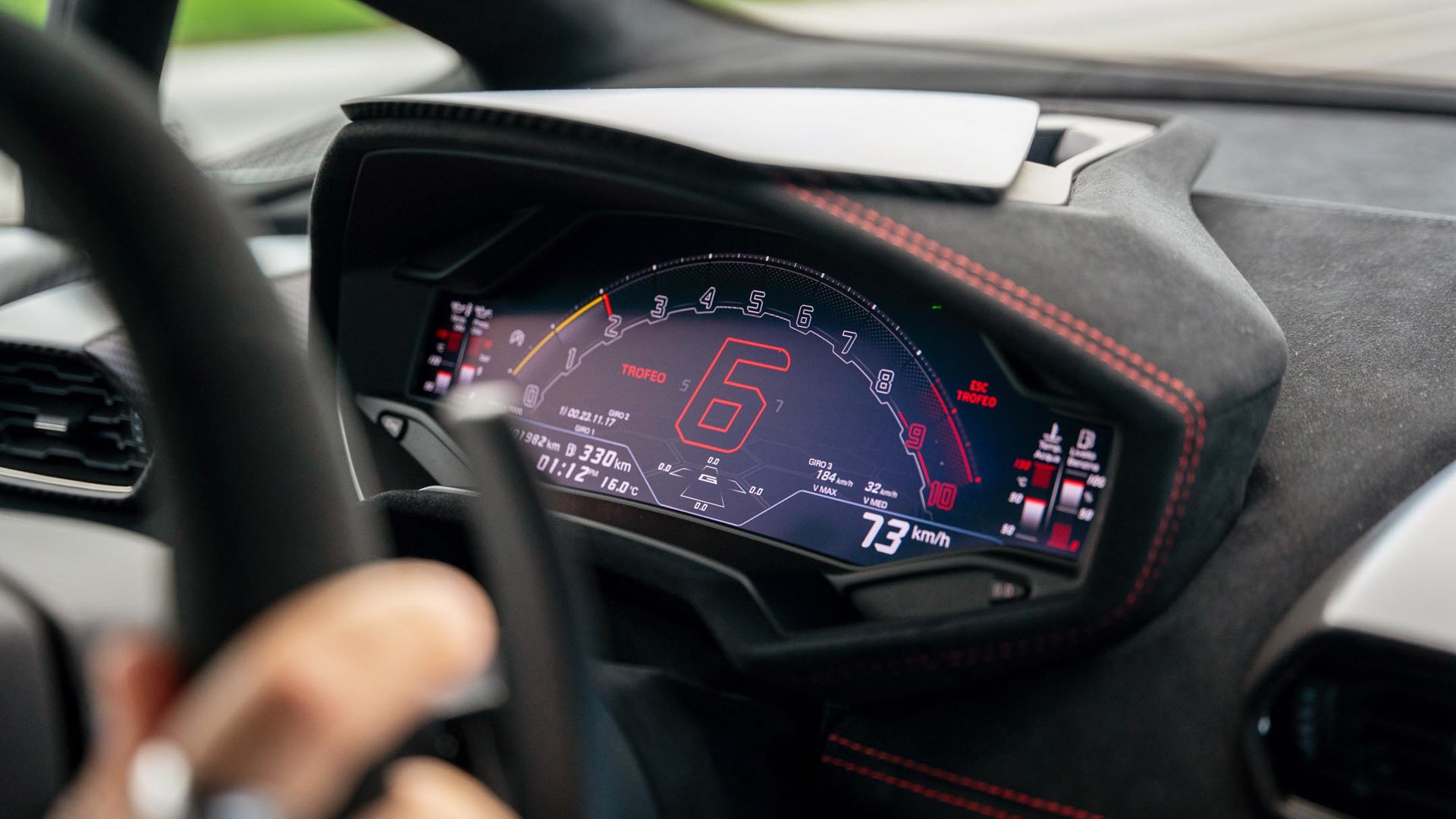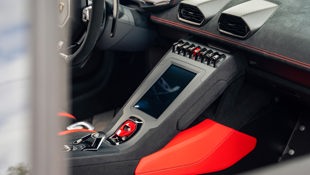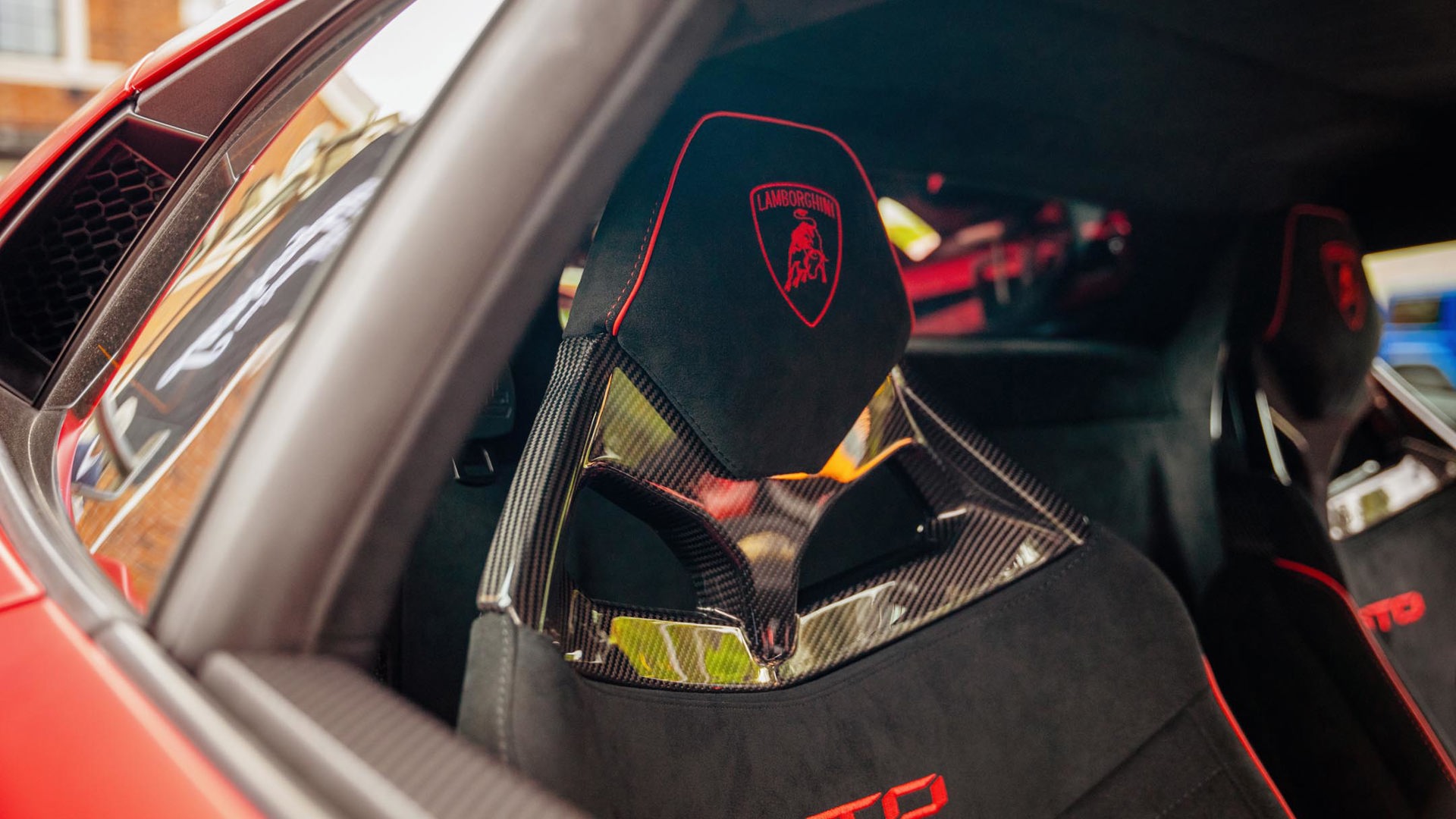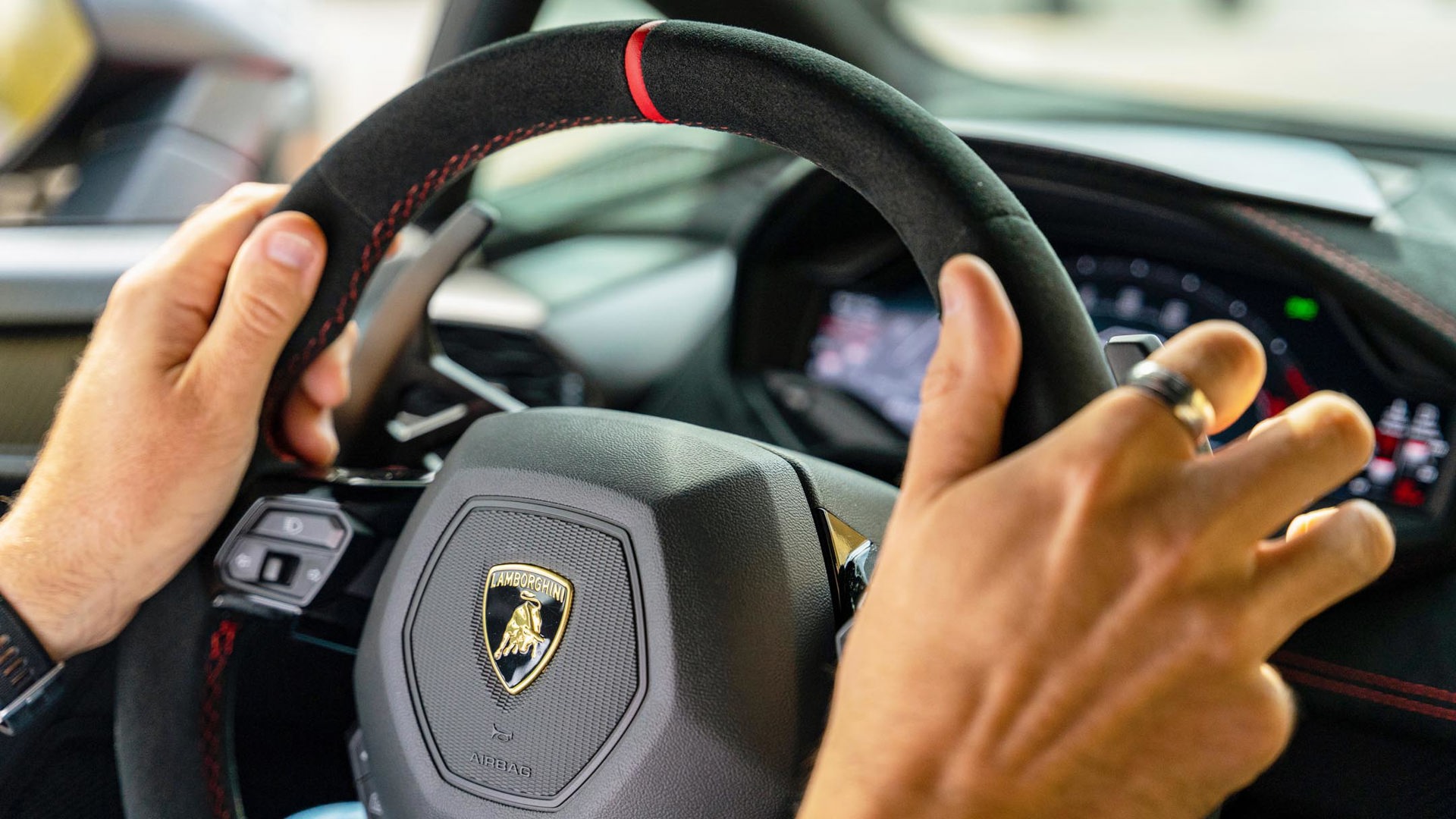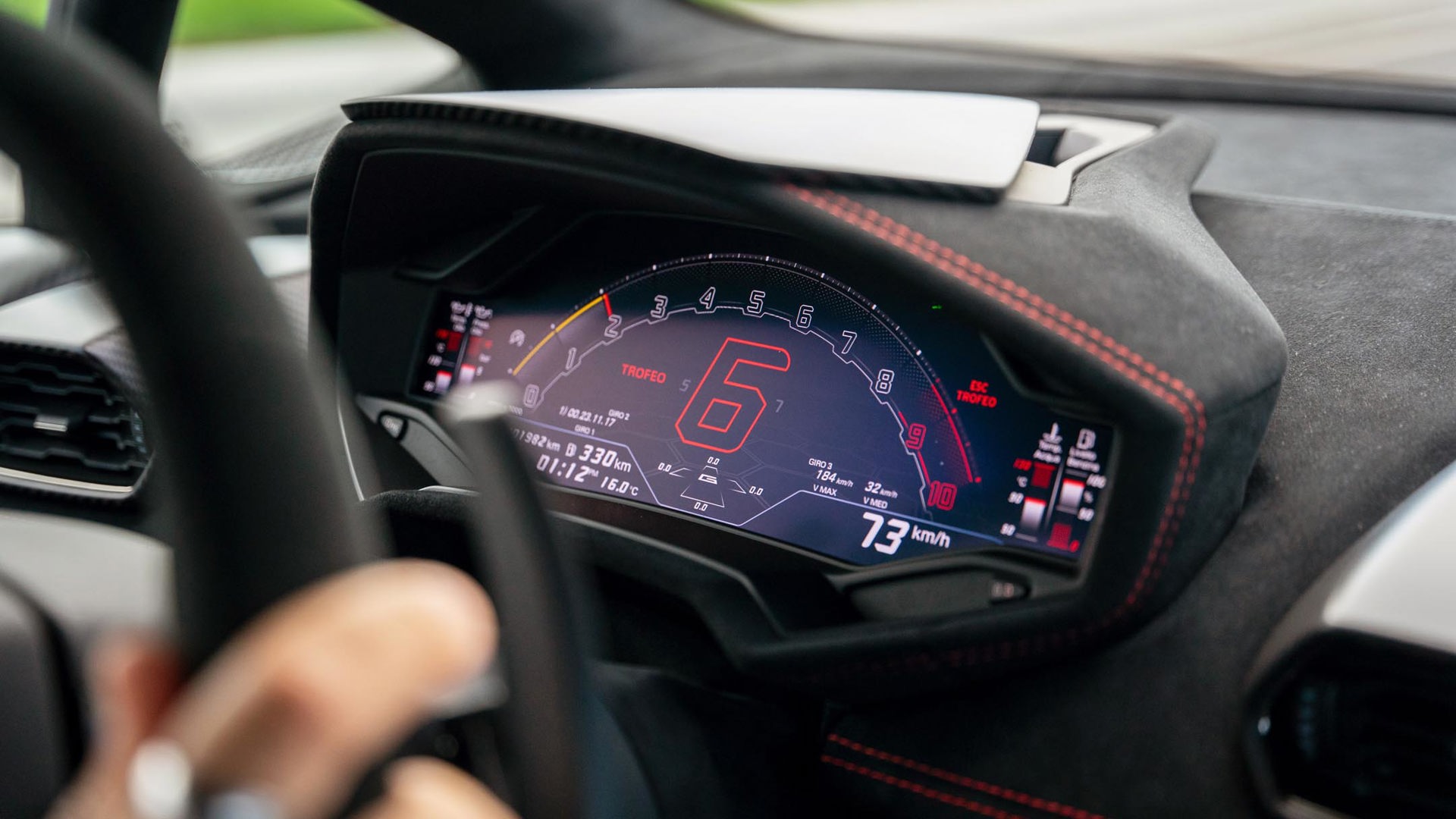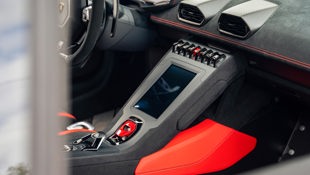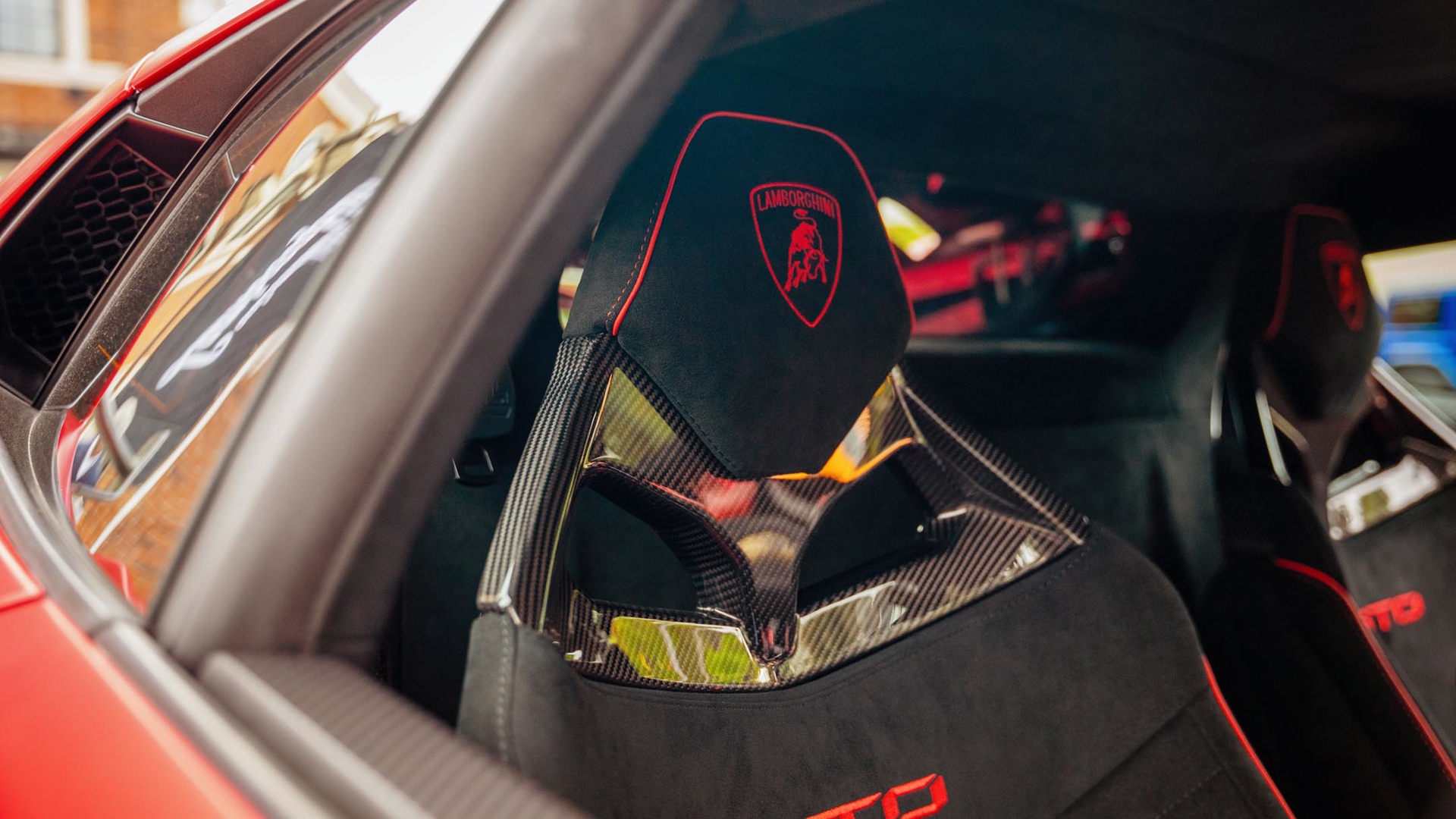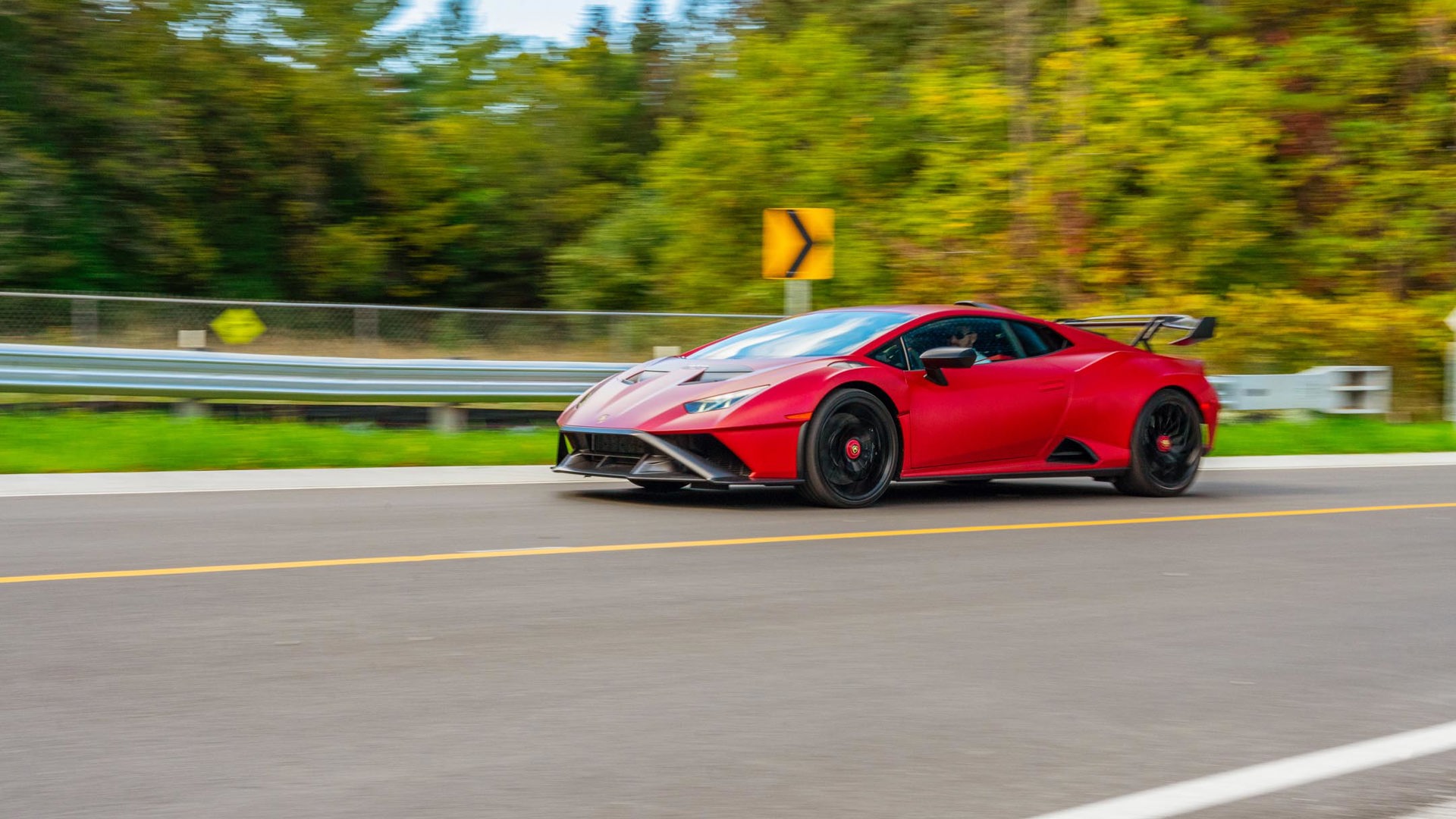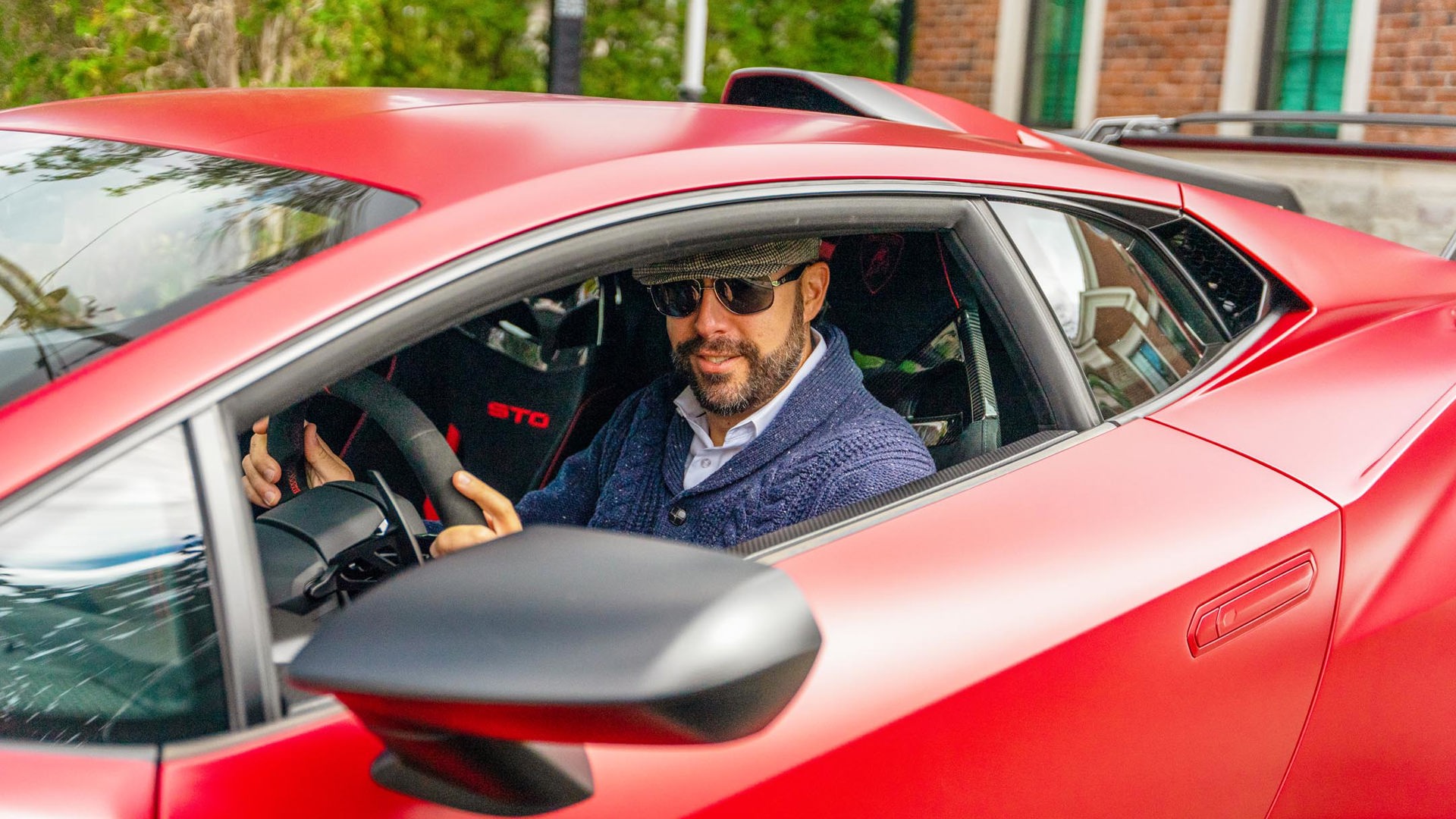Porsche has its RS variants, Mercedes-AMG its Black Series, and Ferrari its Pista edition. But another luxury performance brand has taken measures to join this trend with the introduction of the 2021 Lamborghini Huracán STO – a car built for the track that’s also homologated for use on the street.
Not only can you put a plate on it to drive down to your local Starbucks, but compared to the ultra-exclusive, track-only Aventador-based Essenza SCV12, which will be limited to a 40-unit run and cost upwards of $3.2 million, the Huracán STO is a relative bargain. Not only is its starting price a comparatively low $394,217, but you may actually be able to get your hands on one.
There’s no official word on how many will be built yet, but no doubt it will be an exclusive club. The model made available to AutoTrader.ca for a brief street drive featured a selection of optional equipment that brought its as-tested price to $477,647.
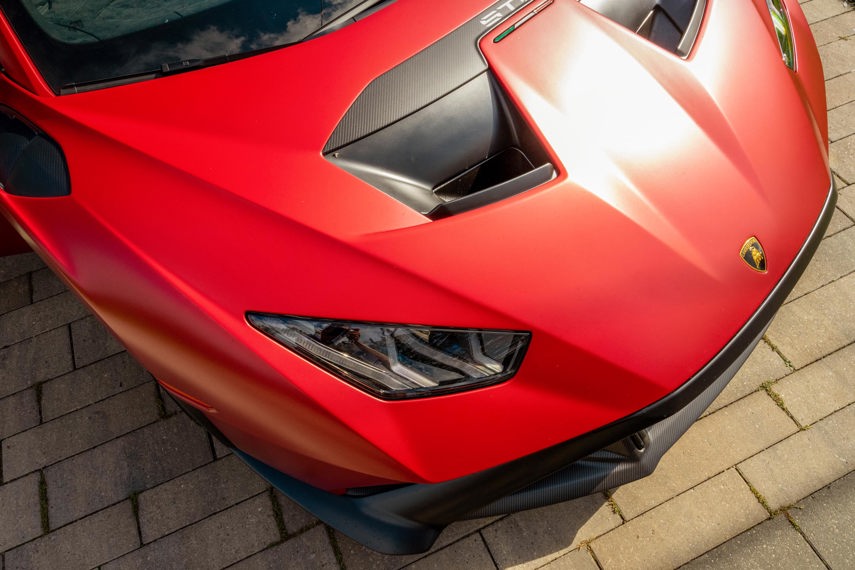
What Is It?
How different is the STO from the existing Huracán offerings? In a word: very. Gaping air ducts, splitters, louvres, scoops, and the massive rear wing aren’t just for show; they all provide visual clues to the performance potential contained within. Offered only with rear-wheel drive and boasting the same horsepower as a Performante, the Huracán STO – that’s short for Super Trofeo Omologata, by the way – sheds a whopping 43 kg (95 lb) to achieve a 1,512-kg (3,334-lb) curb weight. This was accomplished through the use of lightweight materials, including carbon fibre, of which 75 per cent of the body panels are made. In fact, only the roof and doors are aluminum.
Not only have the new body panels helped shed weight, but they also increase aerodynamic efficiency. The beautiful matte-red paint is an Ad Personam option called Rosso Pyra that manages to be both elegant and visually striking. The rear fenders have been designed to increase downforce, while the large roof scoop increases airflow to the engine and helps cool off the exhaust.
The single-slotted wing with a double airfoil offers three positions to enhance downforce, which can fluctuate by as much as 13 per cent depending on speed and conditions. The integrated “shark fin” assists with cornering stability and straightens airflow before coming in contact with the rear wing. This tester also featured black brake calipers behind 20-inch matte-black forged rims, as well as a full exterior carbon fibre pack.
The Huracán isn’t known for having an abundance of storage space as it is, but the STO has even less. More of a weekend warrior/track-day darling than a grand tourer for an extended getaway, the front trunk will accommodate a racing suit and an open-face helmet under the carbon-fibre clamshell, but likely nothing more. Incorporating inspiration from the classic Miura and more recent Sesto Elemento, the front bumper, hood, and fenders have been combined into one feather-light piece that can be lifted with a single finger.
It’s What’s Inside That Counts
The interior may be sparse but it’s anything but basic. It’s minimal by design, featuring faux suede and genuine carbon fibre emphasized by piano black trim and leather accents. This tester was outfitted in Nero Ade and Rosso Alala (read: black and red), but the possibilities for personalized customization are endless. This model included the Dark Chrome and Twill package; contrast stitching on the seats, dash, and steering wheel; optional sport seats; the Lamborghini name embroidered on the dash; and red seat belts.
The carbon-fibre door panels feature a fabric door pull rather than a handle, and you don’t even get carpet. You can get carbon-fibre floor mats if you pay extra. Anything that adds weight without performance is pitched, save for the steering-wheel-mounted turn signal switch, and the fire extinguisher that resides behind the passenger seat. The beautifully sculpted, manually adjustable lightweight sport seats are also made from carbon fibre, with minimal padding covered in contrast-stitched synthetic suede.
The Driving Experience
Flip up the red fighter-jet-inspired cover to engage the ignition button. Holding it down provides several seconds of suspense and anticipation before the naturally aspirated 5.2L V10 barks to life behind you in a roaring, exotic cacophony like only a racetrack-ready Lamborghini can. The powerplant makes 640 hp and 417 lb-ft of torque at 6,500 rpm, which is certainly more than enough for most roadgoing activities. Torque is actually less than the Performante, which features 443 lb-ft, but throttle response has been tuned for greater responsiveness.
In a perfect world, yours truly would be testing the new track-focused STO on a closed course without the threat of potholes, construction, distracted drivers, or local law enforcement, but that was unfortunately not the case. While we’re dreaming, I’d also still have a full head of hair and my passenger would be Isla Fisher rather than my friend and photographer, James. Nevertheless, we set off in search of the most dynamic and least punishing stretches of asphalt in the immediate vicinity in which to test this street legal racecar’s roadgoing sensibilities.
Power may be less than the Ferrari 265 GTB or F8 Tributo, or the McLaren 765LT or Artura, but the STO isn’t entirely about brute force. The Lamborghini press release states that, “The Huracán STO is confirmation that races are won in corners rather than on straights.” However, it manages to accelerate from a standstill to 100 km/h in three seconds flat before hitting 200 km/h in just nine seconds, so a slouch it is not.
Road Manners
One would expect such a vehicle to be virtually undrivable on the street, but the STO has soft enough edges to manage just fine so long as you can avoid curbs, potholes and raised sewer access covers. The track has been increased and the ride made stiffer with new bushings and anti-roll bars. The magnetorheological suspension is compliant enough not to be too jarring on poor road surfaces in STO mode but becomes much firmer in trofeo mode. The optional hydraulic nose lift system allows the Huracán to conquer the average speed bump or driveway entrance, but attention still needs to be paid to avoid a costly mishap to the carbon-fibre front splitter.
Stretching its Legs
During our all too brief time with the STO, we made a beeline to an area that I often use to test the more exhilarating vehicles I’m fortunate enough to pilot. The last vestiges of engaging, undulating curves in an area otherwise taken over by housing developments and strip malls built on a colonial grid, I was able to play with the driving modes and pour a little coal on the fire. The default setting, STO mode is optimized for normal road driving. Trofeo mode prioritizes track day performance on dry asphalt, sharpening steering, throttle response, suspension, traction control, and torque vectoring. It also allows additional exhaust baffles to open above 4,500 rpm, which sounds glorious. The pioggia (rain) mode optimizes ABS, traction control, torque vectoring, and rear-wheel steering for driving in wet conditions to minimize the loss of grip.
Making the move from STO to trofeo mode makes a noticeable difference. Seemingly in the time it takes for synapses to fire information from one neuron in your brain to another, the Huracán STO is able to respond to inputs from your hands on the wheel and right foot on the throttle. Acceleration feels instantaneous and suitably abrupt, the tachometer rocketing towards its 8,500 rpm redline as the back of your skull is introduced to the headrest. Pull in the right steering-wheel-mounted paddle and a hearty click engages the next gear lightning-fast through the seven-speed dual-clutch automatic transmission. When driven enthusiastically, you’re risking incarceration on the street in mere seconds, but on the track, you’ll be able to lay down some impressive lap times.
An optional connected telemetry system is exclusive to the STO, which records video and data from lapping sessions that is then available for viewing and analysis on your smartphone.
Unlike the all-wheel-drive Huracán Evo I drove last year, the STO’s front wheels were not attached to a driveshaft, so steering feels lighter and more agile at low speeds. The addition of rear-wheel steering and a 53 per cent increase in downforce allow the STO to yaw around corners like a slot car. Without any fanfare from the wide rubber contact patches in the rear, the car feels more glued to the road the faster it goes. Handling is sharp and astonishingly precise with just the right amount of response through the wheel.
Braking is equally impressive, bringing the Huracán down from speed quickly, predictably, and without excitement. A new brake temperature monitoring system (BTM) also allows the driver to manage the system’s temperature and adjust their driving accordingly mid-lap rather than finding out afterwards.
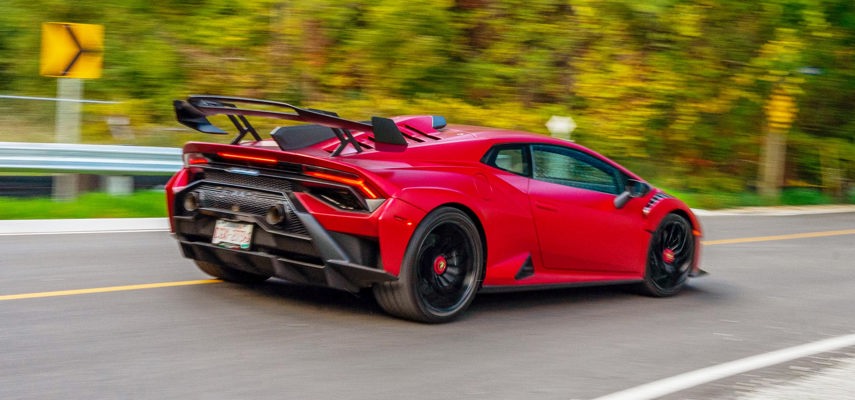
Final Thoughts
The 2021 Lamborghini Huracán STO manages to seamlessly combine advanced technology in a refreshing manner that doesn’t dilute that seat-of-the-pants analog feeling that often disappears from modern supercars. Driving the STO on poorly maintained public roads, more attention was paid to ensuring that my licence remained intact and that no damage was done to the vehicle while exploring its vast performance capabilities. It did, however, provide an enlightening view into the everyday drivability of the vehicle under less-than-ideal circumstances.
While the STO isn’t exactly intended to be a daily driver in rush-hour gridlock, it was certainly more compliant than I was expecting. The payoff being that once you arrive at the race track or manage to stitch together a few nice bends on a smooth, vacant road, I can’t think of a more rewarding or responsive car you could be driving.


